Are you planning a road trip through the Canadian Rockies and don’t know where to start? Our detailed itinerary for Western Canada road trip from Calgary to Vancouver includes all the incredible places you can visit, budget & road trip tips and our comprehensive guides to help you make the most of your time in Canada. As locals, we provide you only with the best insider tips in one place.
Taking a road trip through Western Canada will bring you closer to the real wilderness. The Canadian Rockies are the southern extent of the only real wilderness in North America. That means you might meet more wildlife than people.
Canada is a huge country and the absolute best way to see it is going on a road trip. Out of the many road trips you can do across Canada, Western Canada road trip is one of the most popular.

Icefields Parkway scenic drive from Lake Louise to Jasper
From Calgary to Vancouver, you will enjoy the fresh mountain air, insanely blue lakes, massive glaciers, huge waterfalls, wildlife, and even a desert in just 2 weeks. Prepare yourself to create lifetime memories!
If you’re new to our blog, you will see that it’s all about outdoor adventures and budget-friendly options – road trip guide at its best! Plus, you will read our local tips which you wouldn’t find elsewhere (trust me, I checked).
Visiting Canadian Rockies? Read these posts:
Epic guide to the Canadian Rockies
Adventure travel guide to Banff National Park
We found that most people visit Canada for 2 weeks, and therefore we’ve created such itinerary. If you’re spending more time in the Rockies, we include more resources in each section for even more activities.
This itinerary starts in Calgary, where we live, and finishes in Vancouver. Alternatively, if you’re starting a road trip the other direction, just read from the bottom of the post up.
Our road trip guide is regularly updated ever since it was first published in 2018, as we discover more incredible places in Western Canada.
*In the spirit of full disclosure: Some links in this post are affiliate links, which means that if you purchase through them, we receive a small commission at no extra costs to you. We appreciate your support!
Table of Contents
Summary of 2-week road trip itinerary from Calgary to Vancouver
Following the below road trip itinerary, you will have a chance to visit 10 incredible places:
- Calgary
- Canmore
- Banff
- Lake Louise
- Yoho National Park
- Jasper
- Kamloops
- Whistler
- Squamish
- Vancouver

Northern Lights in Yoho National Park (the best we’ve ever seen were surprisingly in May)
From Calgary in the prairies, the itinerary continues through the Canadian Rockies. Canmore is the first stop, a little mountain town with a lot of easy summit hikes. It continues to Banff National Park, the oldest and most popular park in Canada with picturesque blue lakes.
Then onwards to lesser-known but spectacular Yoho National Park with the 2nd highest waterfall in Canada. Through Icefields Parkway, the scenic mountainous drive among the giant snow-covered peaks that is ending in Jasper (our personal favourite).
Towards the British Columbia province, it goes through Kamloops and then Whistler and Squamish, both very popular towns for outdoor activities. The itinerary ends in Vancouver, one of the top places in the world to live in. And in case you want to continue further, we include a Vancouver Island road trip through its lush rainforests.
Calgary to Vancouver road trip map
You can see all the mentioned places on the map below for easier orientation. Click the icons for more info and share the map with your road trip buddies.
Western Canada road trip budget for 2 weeks
Car rental: 1000 – 1500 CAD
Fuel: 300 CAD
Accommodation: 600 CAD camping – 2800 CAD hotels (campgrounds cost 15-27 CAD per night per site)
Food: 1400 CAD (50 CAD per person per day, including eating in restaurants)
Attractions: up to 2000 CAD
Park Pass: 140 CAD
It depends on your preferences but you will need around 3500 – 6200 CAD for a couple for two weeks (not including attractions). If you are willing to try a road trip in a campervan you might save even more money. With Smile Campervans you can save 2000 CAD on your hotels. If you cook for yourself and minimize paid attractions you can get closer to 3000 CAD.
We realize that Canada is not a very budget-friendly destination compared to other countries in Europe or South America but we share all the tips that exist in the Rockies to keep you and your wallet happy.
You will find all the tips in our day to day road trip breakdown below.
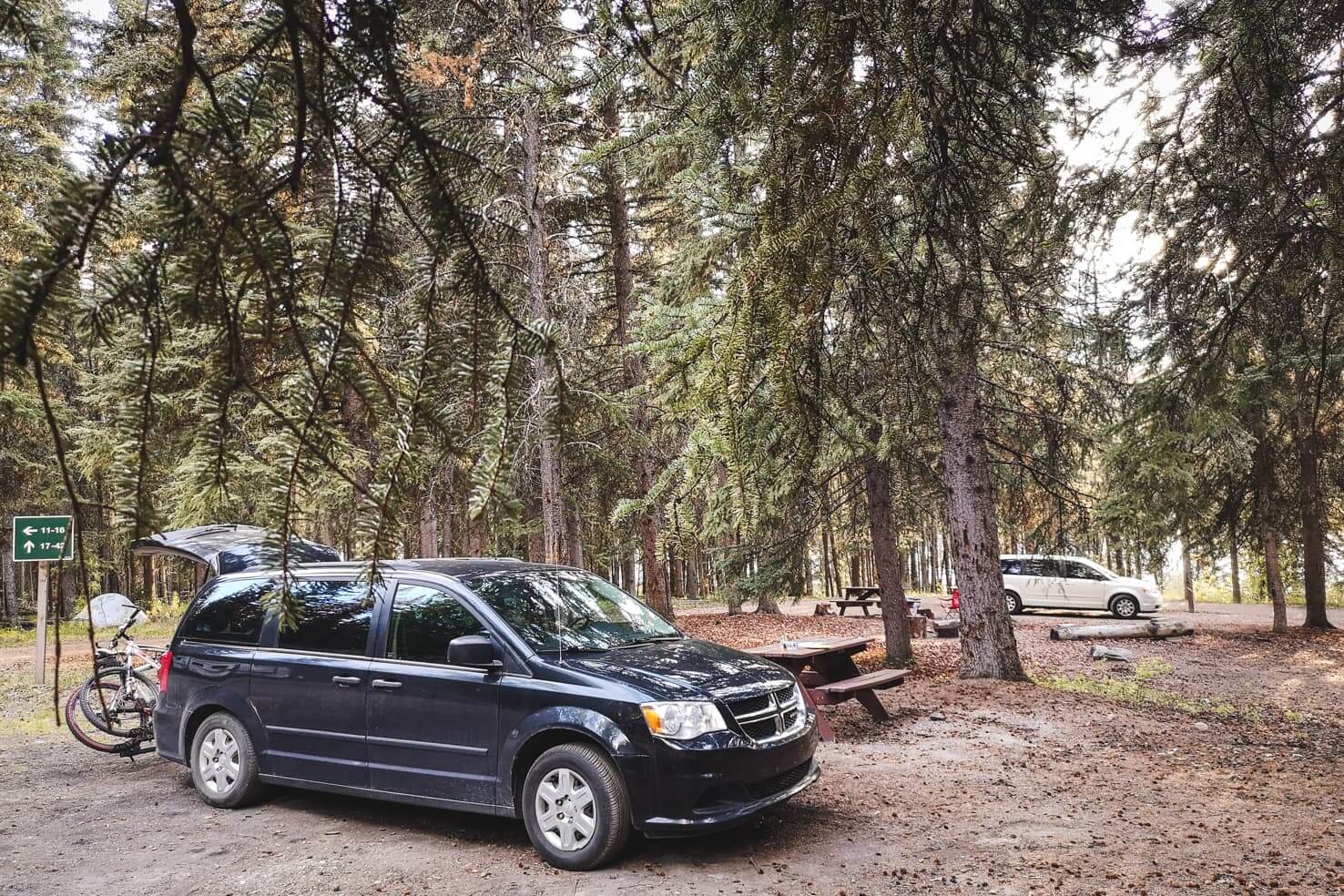
renting a campervan and staying in campgrounds is a great budget option
The best time of the year for the Western Canada road trip
- July & August
This is the busiest time. If you’re planning to visit during the summer, you must book accommodation in advance. Some hotels are fully booked 6 months in advance and so are campgrounds. Some campgrounds along the Icefields Parkway operate on a first time first serve basis but you must arrive early during the day to get a spot.
- June & September
Our recommendation is to travel during June and September. It’s warm outside, it’s less busy and you get to enjoy the most popular attractions without herds of tourists. Especially places like Moraine Lake and Lake Louise are insanely busy during the summer.

Moraine Lake – lakes in the Rockies usually thaw late May to mid-June
- May & October
While you might encounter some snow during these months, it’s a rare quiet time in the Rockies. Keep in mind that most campgrounds are closed from mid-October to mid-May but if you’d like to stay in hotels, this is a great time.
Another thing to note is that most lakes in the national parks are still partially frozen in May. Moraine Lake Road leading to very popular Moraine Lake in Banff National Park is open mid-May to mid-October. Also, the Yoho Valley Road to Takakkaw Falls in Yoho is open mid-June to mid-October.
- November to April
Even though British Columbia has milder weather than Alberta, you would most likely encounter problems driving through the Rockies. Icefields Parkway between Banff and Jasper National Parks is closed a few times in winter due to avalanche. Some days are good and some days are bad, you never know in advance.
For a more detailed breakdown of the seasons, including the best time to see wildlife with newborns and see northern lights, read our post best time to visit Canadian mountains.

Seeing mama bear with cubs is a joy of spring
How to travel from Calgary to Vancouver
Hands down the best way to road trip from Calgary to Vancouver is by renting a campervan.
If you like adventurous trips, book a Smile Campervan from us. It’s a budget-friendly option to see the Canadian Rockies. You will save on accommodation by comfortably sleeping in the campervan and using campgrounds.
Hotels in Banff cost 300 CAD/night in summer which is one of the reasons why we started a campervan rental company so you can sleep in the car. You will have a small kitchen and a bed that folds into a couch. Since it’s a small car, you won’t have any problems with parking next to the popular attractions, as you have when finding a spot for RV.

You will need your own vehicle – distances are big and buses are not common.
If you’d like to stay in hotels, you can rent a smaller car using Rentalcars to compare different car rental companies.
Be prepared to drive between 1500 and 2000 km. Canadian roads through the mountains are wide and almost straight compared to European roads in the Alps or other mountains. You will spend somewhere between 25 to 35 hours sitting in your car in two weeks. But trust us; all of this will be worth it.
Detailed itinerary for your road trip from Calgary to Vancouver
Our day by day breakdown includes all the popular places and also some lesser known gems of the Canadian Rockies.

Emerald Lake in Yoho National Park
Day 1: Calgary
Calgary is the closest airport to the Canadian Rockies. It’s a young city, only a little more than 140 years old since Europeans settled here.
It has the biggest amount of sunny days in Canada – 333 days a year! Chances of good weather are very high. Calgary’s city road system is well designed to get you fast to your destination and you can rarely see congestions (unlike in Vancouver).
Things to do in Calgary
Calgary is on the edge of prairies and landscape is not exceptional. The missing scenery is balanced with many city parks. You will find here the most park areas in all of the North American cities. To give you some ideas about what you can do in Calgary, read our post about 30 things to do in Calgary in summer.
Fun activities in Calgary:
- City vibe – go to Kensington, 17th Avenue South or downtown area by the Bow River or learn about Canada’s history at Heritage Park
- Outdoors – Nose Hill Park for a walk with Calgary’s skyline, Fish Creek Park for a bike ride or a walk, Canada Olympic Park for a zipline, luge ride or mountain biking
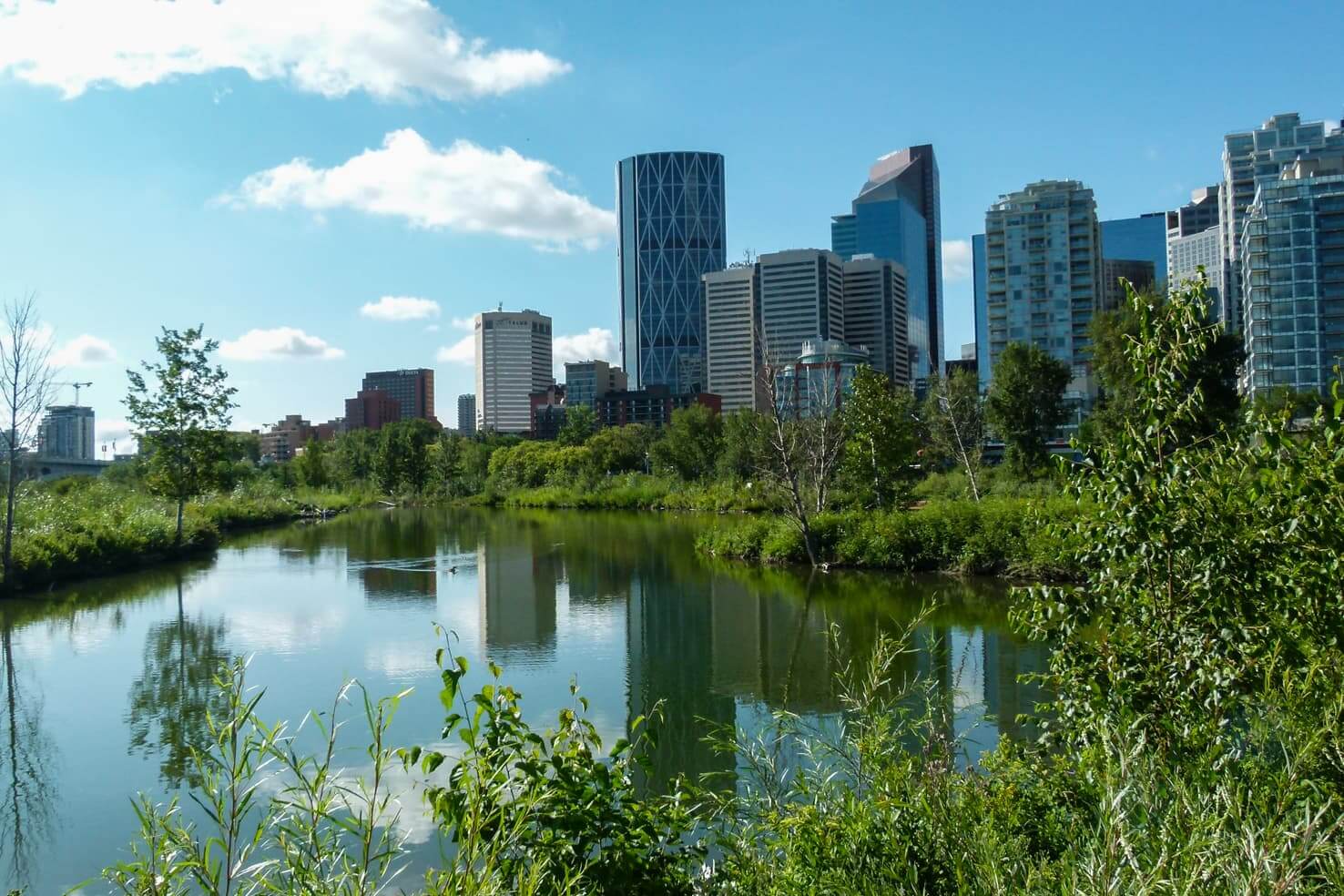
Prince’s Island Park in downtown Calgary
Where to stay in Calgary
If you are staying in a tent or camper, the campgrounds are at the city borders. Similar to other cities you won’t find many campgrounds close to downtown. Calgary West Campground is located near Trans-Canada Highway. If you prefer something cozy close to downtown, try River Wynde Executive Bed & Breakfast.
Day 2: Calgary to Canmore
Driving time: 1.5 hour / 115 km

Grassi Lakes Hike
In the morning you will take Highway 1 to Canmore. From downtown, it is about 20 minutes to the city limits. Once you will get out you can already see peaks of the Rocky Mountains on a clear day. Drive to Canmore will take about an hour.
Things to do in Canmore
In Canmore, you can explore western-like looking town center. Canmore has plenty of hiking options on every side of town. For a bird’s eye view of Canmore and surrounding mountains, we recommend hiking to the summit of Ha Ling Peak or Mount Lawrence Grassi.
Fun activities in Canmore:
- Grassi Lakes – a short 4 km hike to gorgeous emerald coloured lakes
- Mountain biking (or cross-country ski in winter) in Canmore Nordic Centre or along Bow River
- Bike from Canmore to Banff on Legacy Trail – easy and paved 27 km trail, you can return the same way, bike through Goat Creek Trail or take a bus
- Stand up paddle boarding or kayaking on Rundle Forebay, Bow River or Quarry Lake
- Heli trip to see Canadian Rockies from above (see pictures in our photo essay here)
For more, read our post: 20 fun outdoor things to do in Canmore.
Canmore accommodation
Canmore has options for every budget. Hotels are usually cheaper than in Banff, so you might consider staying in Canmore and drive to Banff every day. It’s only 20 minutes by car. Camp at Wapiti Campground or stay at best rated Canmore Rocky Mountain Inn.

biking around Canmore is constantly scenic
Day 3-4: Banff
Driving time: 25 minutes / 24 km
From Canmore, get back on the Trans-Canada Highway. As you exit the town you will have to stop at park entry booth to purchase Parks Canada Discovery Pass (136 CAD for a group/family). You have an option to purchase daily or yearly pass, but since you’ll be visiting national parks for more than a day, a yearly pass pays off. Our itinerary includes 8 days spent in National Parks.
TIP
Purchase your park pass at Canmore Visitor Information Centre if you’re traveling in summer to avoid lines at the booth for Banff National Park.
Things to do in Banff
The oldest and most popular national park in Canada offers endless outdoor options. We compiled a huge list of 100 things that you can do in Banff National Park so there’s plenty to choose from. You may like an easy relaxed day on a boat at Lake Minnewanka or hike up the Tunnel Mountain for panoramic views of Banff and surrounding mountains.
Banff is the only town in Banff National Park and gets very busy during summer. Try to visit the town during weekdays in the summer season to avoid the biggest crowds. Once you go out of town, it’s less crazy. Our road trip itinerary gives you two days to spend in Banff.
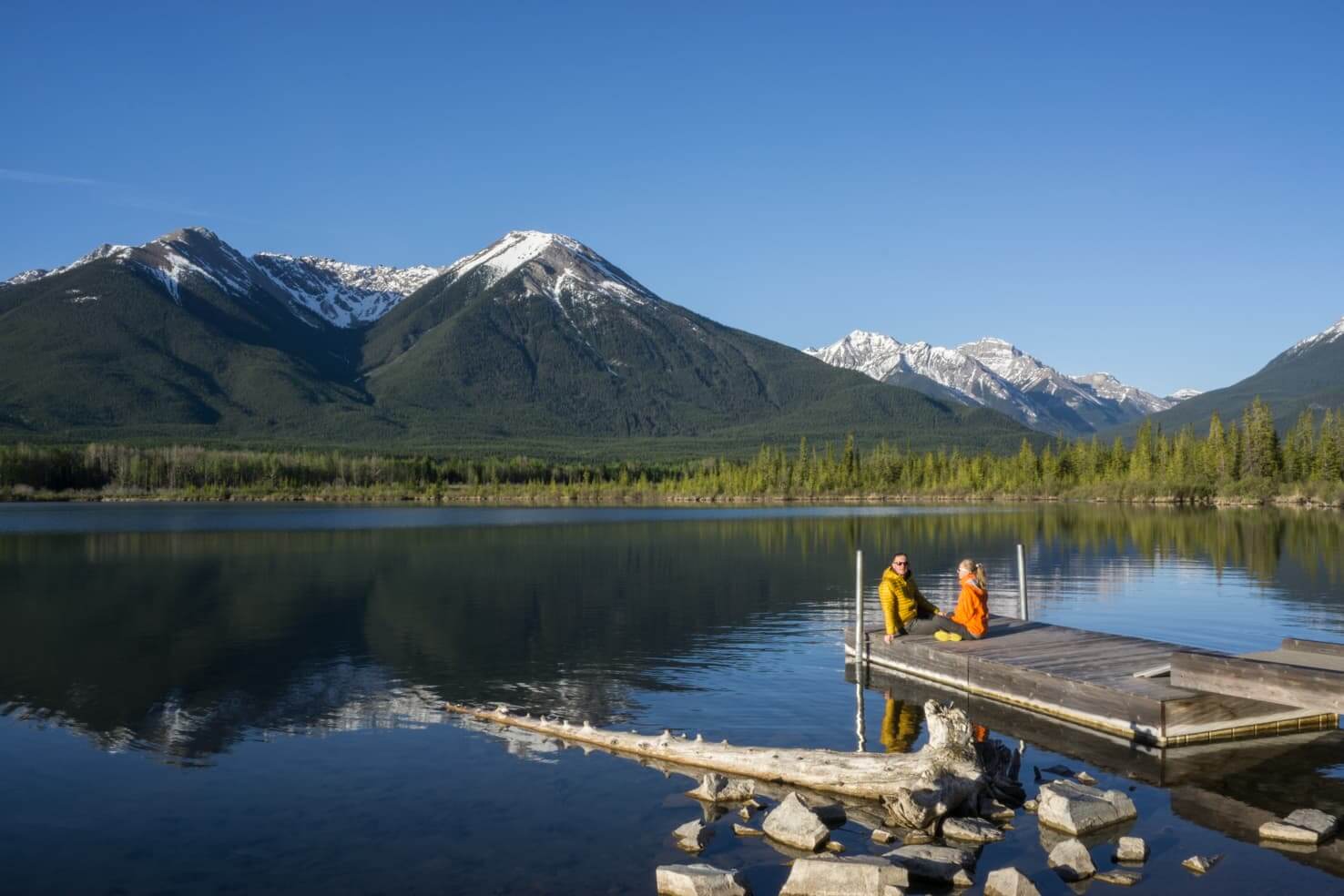
Vermilion Lakes in Banff
Fun activities in Banff:
- Hike up the Sulphur Mountain (for free) or take a gondola (64 CAD/person) for the most iconic view of Banff
- Go for a dip in Banff Upper Hot Springs (8,30 CAD/person)
- Visit Cave and Basin, the place where National Park was created (free with Discovery Pass)
- Rent a kayak in Banff and go to Vermillion Lakes or take a boat ride on Lake Minnewanka
- Bike & hike to Aylmer Lookout for stunning bird’s eye view of Lake Minnewanka
- Hike up Tunnel Mountain
- Try one of the 20 hikes around Banff
- Rent a bike and explore viewpoints around Banff on biking trails
- If you’re visiting in winter, go ice skating on one of the lakes or cross country skiing
TIP
Read our Banff budget guide for more tips.
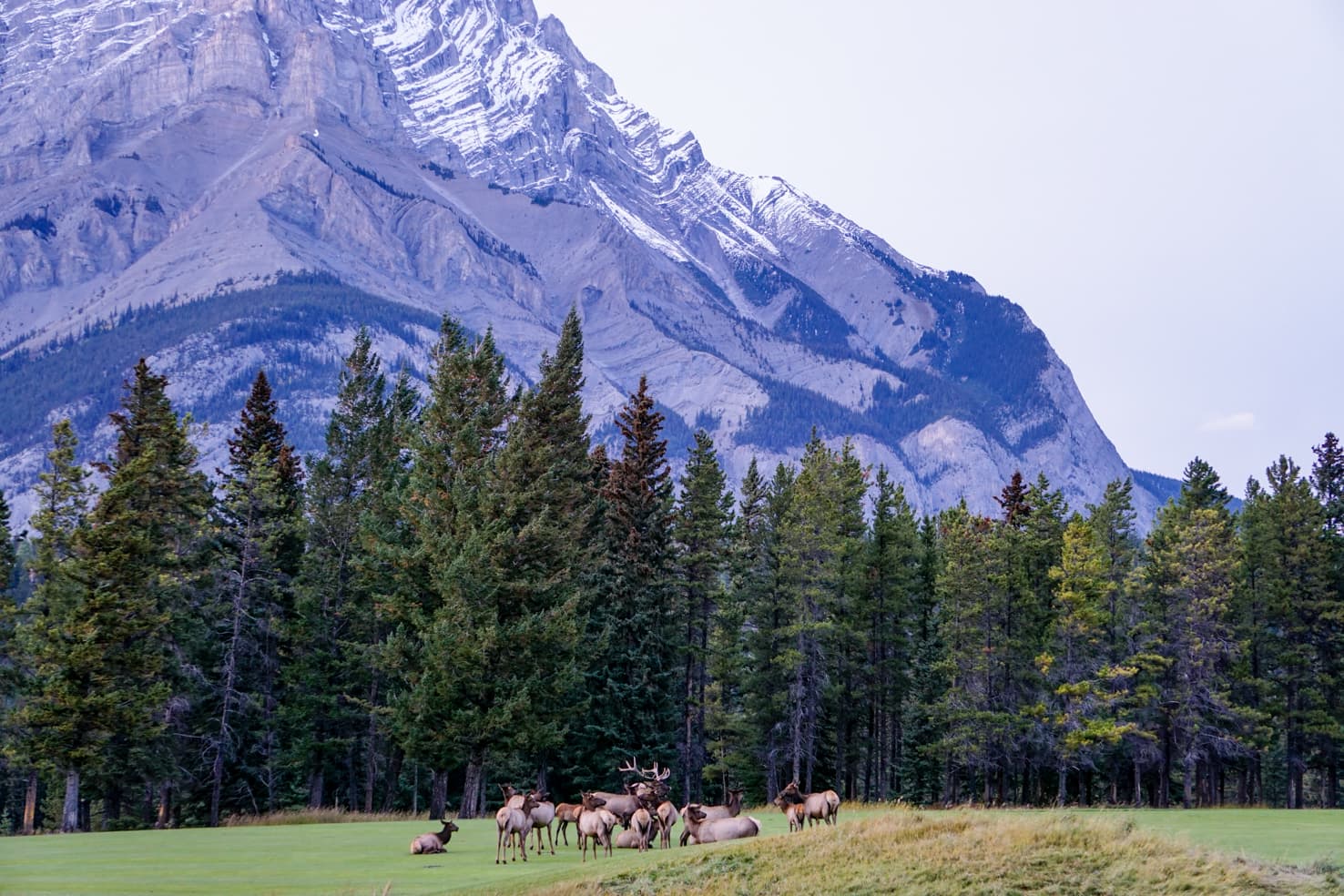
Secret tip: drive around golf course in Banff before sunset and you’ll see plenty of wildlife
Banff Accommodation
Staying in Banff will be one of your biggest expenses in the budget. Hotels during the high season usually cost around 300 CAD/night. There are some budget-friendly options which include hostels for around 70 CAD/per person.
If you bring your own tent or drive a campervan and stay in the campsites with warm showers, expect to pay around 30 CAD at Tunnel Mountain Campground. Reasonable prices for hotels start at 120 CAD, you can try best-rated accommodation in Banff Mountain View Bed & Breakfast.
Read more: Complete guide to camping in Banff National Park
TIP
If you’re planning to stay in town, you need to book your accommodation months in advance. It sells out fast, even campgrounds. You will find more tips about campgrounds at the above link.
Restaurants in Banff
Surprisingly chain restaurants aren’t overpriced compared to the rest of Canada. Our tip – go local! You can find great food in the Balkan Restaurant or The Maple Leaf. Our favourite restaurant in Banff, which is also in Vancouver and other cities, is Old Spaghetti Factory.
Day 5: Bow Valley Parkway (Alberta 1A)
Driving time: 2-4 hours / 60 km
Stock up on food supplies in Banff because the next bigger grocery store is 5 days away in Jasper. Leave Banff early in the morning and you’ll have a bigger chance of seeing wildlife. Heading west from Banff, after about 10 minutes of driving, you will take the exit to 1A/Bow Valley Parkway.

Johnston Canyon Hike (entering this cave is no longer possible)
Stay on this road all the way to Lake Louise. Driving itself takes only 1.5 hours but you will definitely want to stop for some great pictures. You should arrive in Lake Louise in the evening.
Things to do on Bow Valley Parkway
Bow Valley Parkway is a wildlife corridor and many species of animals can be seen along the road. Most common are elk, sheep, mountain goat, bear, and wolves. Have your camera ready and drive slow, the speed limit of 60km/hour is there for a good reason.
Popular places you can visit on Bow Valley Parkway:
- Johnston Canyon to Ink Pots – a very popular hike to several waterfalls all year round. You can go on an ice walk in winter. (it’s 5 km round trip to Upper Falls or 12 km round trip to Ink Pots)
- Castle Mountain – a lesser known hike to Rockbound Lake hiding behind the Castle Mountain (17 km round trip to the lake or 22 km round trip for a bird’s eye view of the lake)
- Morant’s curve – a famous spot for photographing train with the Rocky Mountains in the background

Ink Pots at the end of Johnston Canyon Hike
Accommodation along Bow Valley Parkway
If your day extends, you have a few options to stay overnight along the road. Right next to the Johnston Canyon is a Johnston Canyon Campground (closed in 2019). And halfway on the road at the Castle Junction, you can stay at Castle Mountain Campground, a hostel or Castle Mountain Chalets.
Day 6: Lake Louise area
Driving time: 1-2 hours / maximum of 30 km
If you arrived in Lake Louise on the evening of day 5, you probably had a chance to see Lake Louise. If not, wake up early to beat the crowds from tour buses and go for a morning stroll. There’s an easy hike to the Lake Agnes Tea House, you can see the lake, hotel and even ski resort on the other side of the valley.

Rent a canoe for 105 CAD +GST for ½ hour or bring your own (you can rent in Banff and go on any lake).
And of course after Lake Louise, don’t forget to visit Moraine Lake, one of the most beautiful lakes in the Canadian Rockies. Visiting Moraine Lake is limited due to its massive popularity. You need to either enter the Moraine Lake Road early in the morning (6 am the latest) or you need to wait until a parking spot opens up and they will let you in. Another option would be to bike to Moraine Lake or book a shuttle bus from Lake Louise. Read our Moraine Lake guide for tips.
Things to do in Lake Louise area
Lake Louise has many hiking trails around. Since most of them are summiting one of the mountains around the lake, you will have the chance to see Lake Louise from above. I highly recommend you take advantage of it.
Fun activities in the Lake Louise area:
- Dip in the Lake Louise or Moraine Lake (I dare you, it’s cold!)
- Go biking on Great Divide Trail
- Hike Larch Valley and Sentinel Pass or to Consolation Lakes in Moraine Lake area (mandatory group of 4 or more in summer)
- Hike the Beehive circuit or less crowded Mount Saint Piran in Lake Louise area
- See grizzly bears in the wild from Lake Louise Gondola (38 CAD, not guaranteed but very common)
Lake Louise and Moraine Lake will be highlights on your Calgary to Vancouver road trip.

Moraine Lake, the most famous lake in the Rockies
Where to stay in Lake Louise
You can stay at Mountaineer Lodge, as a good value option or at campgrounds. There are not many accommodation options, it’s just a small village after all and most people choose to stay in Banff.
You can stay two nights in the Lake Louise area and take a detour to Yoho National Park the next day or you can stay in Yoho. If you stay in Lake Louise, you won’t have to drive back from Yoho and it will save you half an hour on your longest day in a car on day 8.
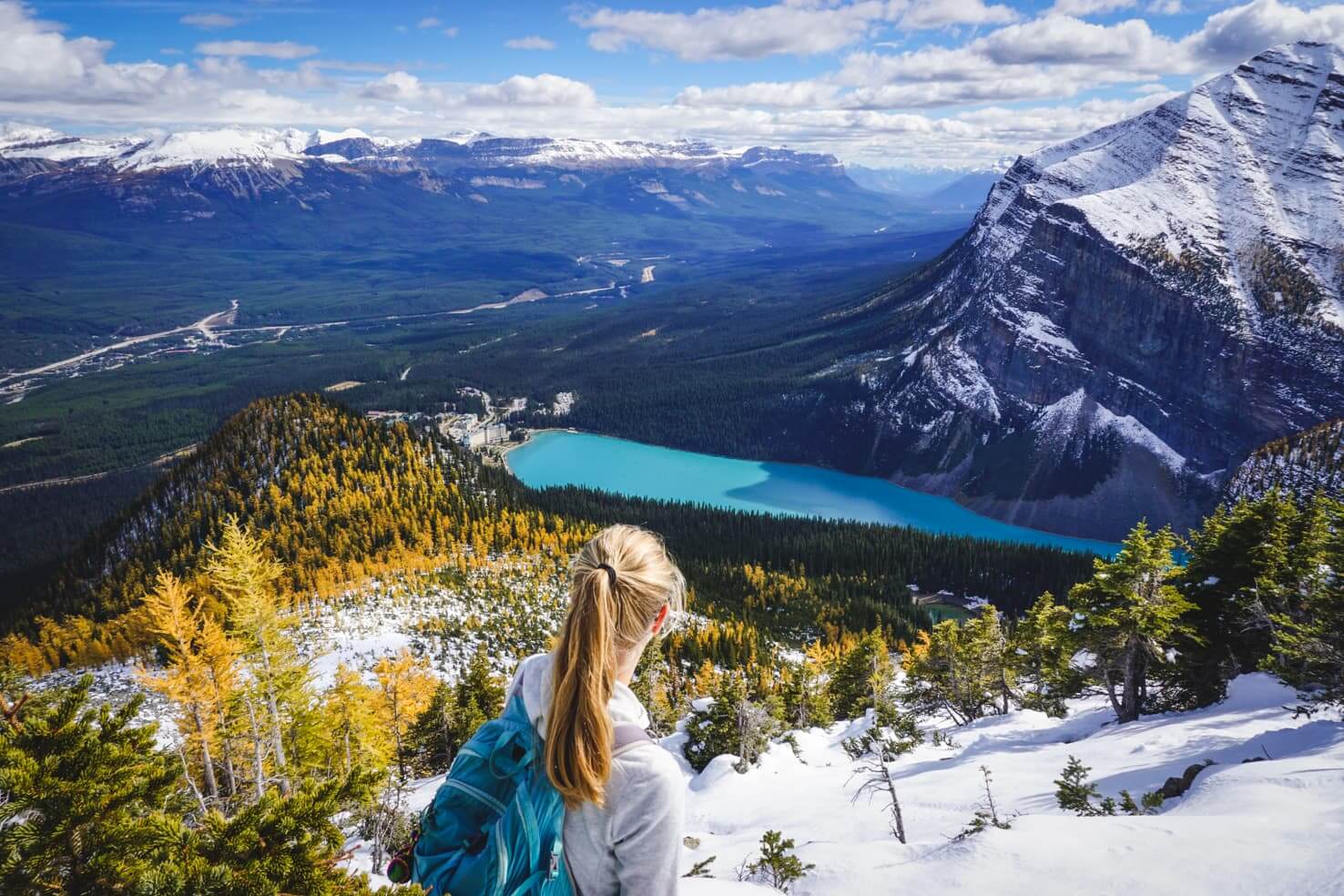
Hiking Mount Saint Piran above Lake Louise
Day 7: Yoho National Park
Driving time: 2-3 hours / 120-170 km
Leave early in the morning and take a small detour to Yoho National Park. You will take Highway 1 towards Golden. In case you don’t mind driving longer, you can visit Wapta Falls at the border of Yoho National Park.
Things to do in Yoho National Park
You can go hiking, kayaking on Emerald Lake, see the waterfalls or just driving around and exploring rock formations.

Natural Bridge on the way to Emerald Lake
The biggest task for you will be to decide if you want to visit the Lake O’Hara area or not. Lake O’Hara is a pristine alpine area with very limited access and it’s in high demand. You need to book government operated campground three months in advance. Otherwise, another option is to visit the area for a day trip. In this case, you also need to book a shuttle bus which sells out the minute registration opens in April. For more info, read our guide to Lake O’Hara.
Fun activities in Yoho National Park:
- Hike in Lake O’Hara area (whole day)
- See the Spiral Tunnel
- Observe Natural Bridge
- Ride a canoe on Emerald Lake or hike around
- See Burgess Shale rock formation
- Visit Takkakaw Falls (the 2nd tallest waterfall in Canada) or Wapta Falls
- Go hiking to see the waterfalls or lakes

Kicking Horse River in Field
Accommodation in Yoho National Park
The center of Yoho National Park is a tiny town Field. You can stay at a picturesque lodge at Emerald Lake (350 CAD/night) or Lodge at Lake O’Hara (700 CAD/night). Our suggestion is to try one of the guesthouses that are located on the hillside of Field, Kicking Horse Campground or head back to Lake Louise (it will save you some time for the next day drive).
Day 8: Icefields Parkway
Driving time: 3-8 hours / 230-260 km
Whether you start from Field or from Lake Louise, prepare for a long and intense driving experience. But the ever-changing scenery will make up for it. Don’t forget to fill up in Lake Louise as there is only one gas station on Icefields Parkway with 50% mark-up. From Lake Louise follow signs for Jasper. After only a minute on the highway, you will exit it to Highway 93, better known as Icefields Parkway.

Athabasca Glacier
Most beautiful places on the Icefields Parkway
Visiting all the places along the road can take more than a week. Most travelers usually do it in 1-2 days. Try to fit these places into your schedule: (organized by importance)
Read our detailed guide about Icefields Parkway for more viewpoints, hikes, and pictures so you get a better idea of what you can expect.
- Peyto Lake and Bow Summit
- Parker Ridge Hike or Wilcox Pass Hike (5 or 8 km hike with a stunning view of the glacier)
- Mistaya Canyon
- Horseshoe Lake (cliff jumping in crystal clear water)
- Columbia Icefield Centre
- Athabasca Falls
- Sunwapta Falls
- Bow Lake and hike to the Bow Falls
- Panther Falls
Our latest find is Glacier Lake in Banff National Park, an amazing day trip ending at a serene picturesque lake with a backcountry campground. If you’re looking for a hike without crowds, this is the one.
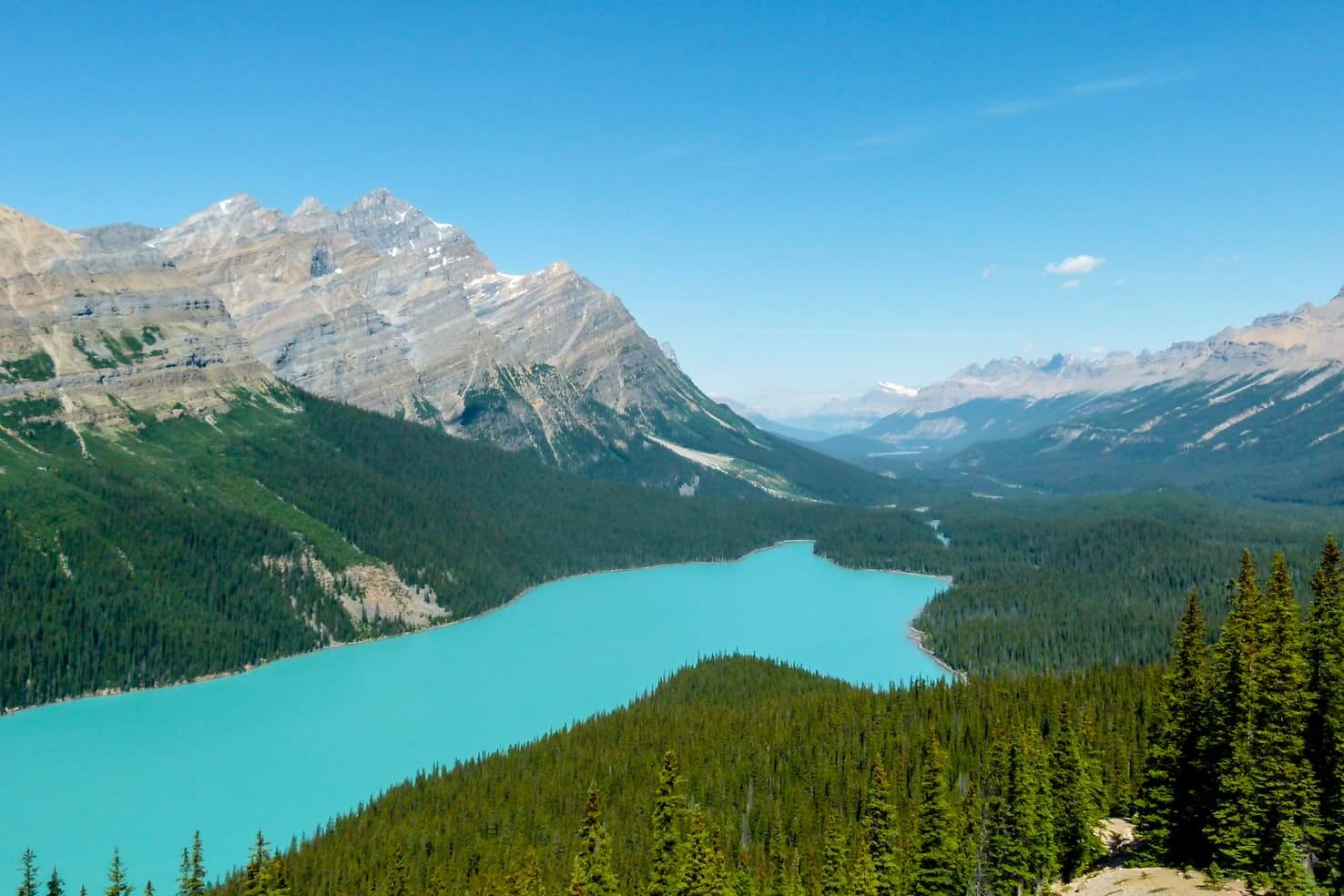
Peyto Lake
Day 9-10: Jasper National Park
Driving time: 3-8 hours / 230-260 km
After a good sleep and digesting all natural elements from the previous day, you are ready for some stretching in the form of a hike or bike trip in Jasper. You can find some inspiration in our detailed guide of 17 best hikes in Jasper for all levels. If you are coming to the Canadian Rockies for outdoor activities, such as mountain biking, stay longer in Jasper instead of Banff.

Pyramind Lake in Jasper
Outdoor things to do in Jasper National Park
Jasper is a better place for outdoor activities than Banff because it’s less visited and there are many more options. You can ride a mountain bike on plenty of single or double track trails around town. You can also bike to Snake Indian Falls (50km) if you like quiet days in the mountains with a surprise at the end. Jasper National Park has many multi-day treks for all levels.
Fun things to do in Jasper include:
- Hike to Mount Edith Cavel and Valley of the Five Lakes
- Visit Maligne Canyon, take a boat on Maligne Lake or hike to Bald Hills to see the lake from above
- Go for a multi-day trek on Skyline trail
- Hike to the summit of Sulphur Skyline
- Dip in Miette Hot Springs after a long hike
- Hike up or take Sky Tram to Whistlers Peak
- Go swimming or stand up paddle boarding to Lake Edith or Lake Annette (you can bike from town)
More ideas are in our extensive list of 65 adventurous things to do in Jasper National Park.
If you truly love wilderness and nature, Jasper is the place to be.

Edith Cavell Hike
Accommodation in Jasper
Hotels in Jasper are smaller than in Banff but there are a lot of family run B&B style houses. Also, compared to Banff prices are more affordable and they sell out just as quickly during the summer. You will also find many nice campgrounds and chalets on lakeshores. Try Pyramid Lake Resort or Wapiti Campground.
Read more: Complete guide to camping in Jasper National Park
Day 11: Jasper to Kamloops
Driving time: 5 hours / 450 km
When you exit Jasper take Highway 16 west towards Kamloops. As you will hit the top of the climb you will be at the Continental Divide and you will enter a province of British Columbia.
After 40 minutes of driving, you will see Mount Robson, the tallest mountain in the Canadian Rockies. Once you reach the intersection with Highway 5, you won’t longer be in the Canadian Rockies. (But don’t worry, you’ll still see plenty of mountains.)
You may even notice the change in types of rock formations and thickness of the forest. The biggest change is in the desert like Kamloops Valley. Kamloops has the warmest summer in Canada.

Kamloops Lake surrounded by desert, a very drastic change in the scenery
Things to do on the way to Kamloops
The drive to Kamloops won’t be as scenic compared to previous days. On the other hand, there are much more options to use motorized vehicles in the forest, such as motorbikes/quads or snowmobiles in winter.
What you can do:
- Hike to the foot of Mount Robson (4 hours)
- Stop at Spahats Creek Falls or Moul Falls
- Hike at Sun Peaks (a small village inspired by European Alps)
- Go paddle boarding at Heffley Lake
- Visit Native village in Secwepemc Museum and Heritage Park in Kamloops
- Hike to Balancing Rock
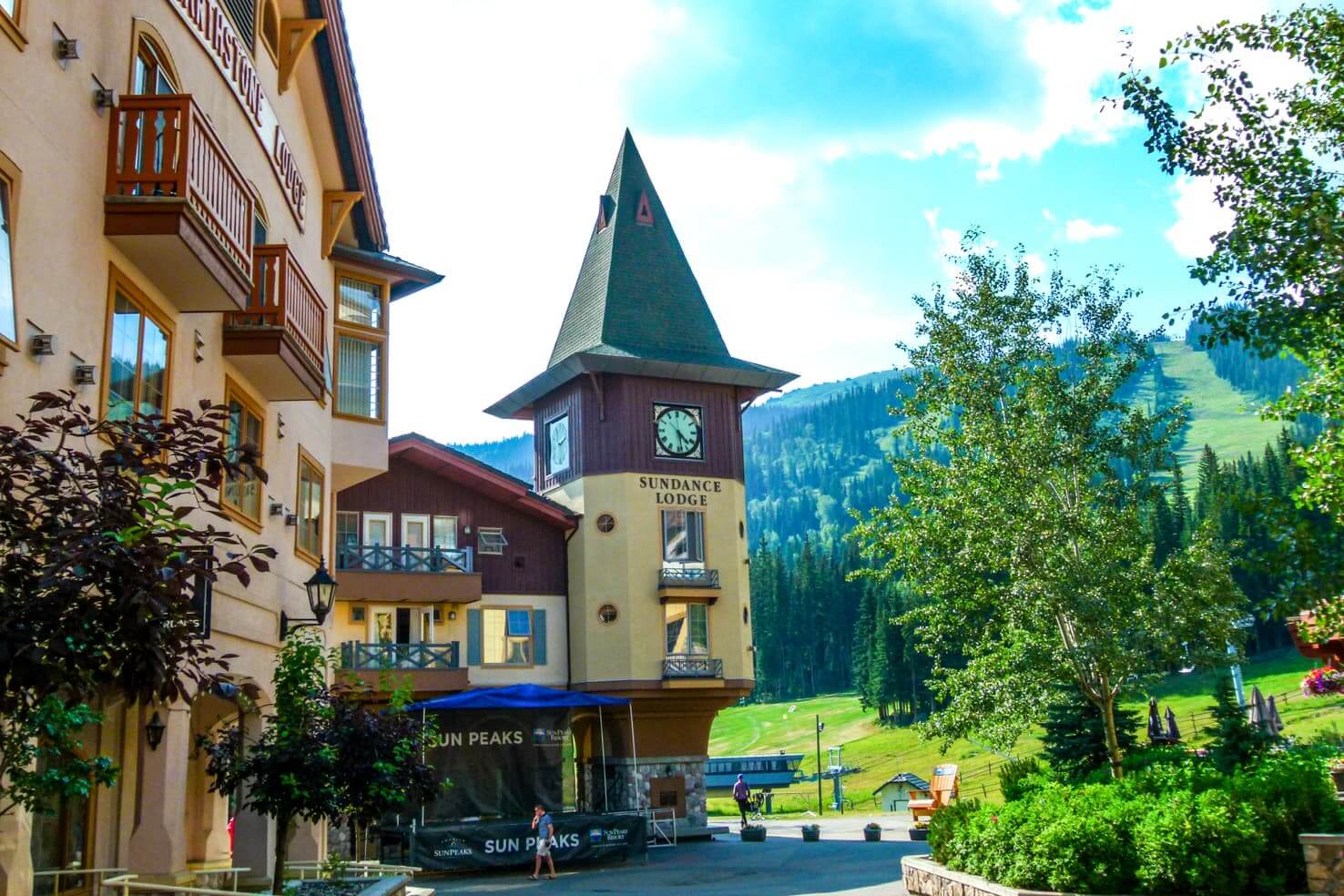
Sun Peaks in Kamloops
Where to stay in Kamloops
Kamloops is the biggest city in central British Columbia and it has many accommodation options. You can stay at Knutsford Campground or as a family in the Plaza Hotel in downtown.
Tips for Kamloops
You can restock your food supplies for the last part of your trip. If you find the time, go for a short hike to either Peterson Creek Park or Kenna Cartwright Park. Bring water with you, especially during sunny days as it gets very hot.
Day 12: Kamloops to Whistler/Squamish
Driving time: 4 hours / 300 km

Balancing Rock by the Kamloops Lake
If you don’t want to spend extra time exploring Kamloops, take the exit towards Vancouver and follow Highway 1. The first half of your day might be quite warm as you will drive through desert-like scenery on your 100 km towards Cache Creek. From Cache Creek, follow signs to Lillooet and then continue to Whistler.
What you can do on the way to Whistler
You will be passing Kamloops Lake with a great view of Thompson Valley. Once you reach Pacific Ranges you will have a chance to take photos of mountain peaks along the road. Here are some ideas on how you can spend your day:
- Take Peak to Peak Gondola in Whistler (64 CAD) and hike in the area
- Stop at Nairn Falls
- Visit First Nations Squamish Lil’wat Cultural Centre
- Go rafting, kayaking, mountain biking or do other outdoor activity
- Build an Inukshuk (human figure build of small stone blocks)
Where you can stay in Whistler/Squamish
Whistler has a world class skiing resort and you will find all types of accommodation. Bear in minds that staying in Whistler is even more expensive than staying in Banff. You can book Aava Whistler Hotel for better value or use Parkbridge Camping campsites.
If you don’t want to stay in Whistler overnight, we recommend driving another 40 minutes to Squamish where prices are more budget friendly. As an example, Howe Sound Inn & Brewing Company costs about a third of the prices in Whistler.
Day 13-14: Vancouver
Driving time: 1-2 hours / up to 120 km
If you stayed in Squamish and you like mountain biking don’t rush from there and go for a ride on 200 km of single-tracks they have around town. If biking is not for you, drive to Vancouver. It is only about an hour and a half from Whistler and 40 minutes from Squamish.
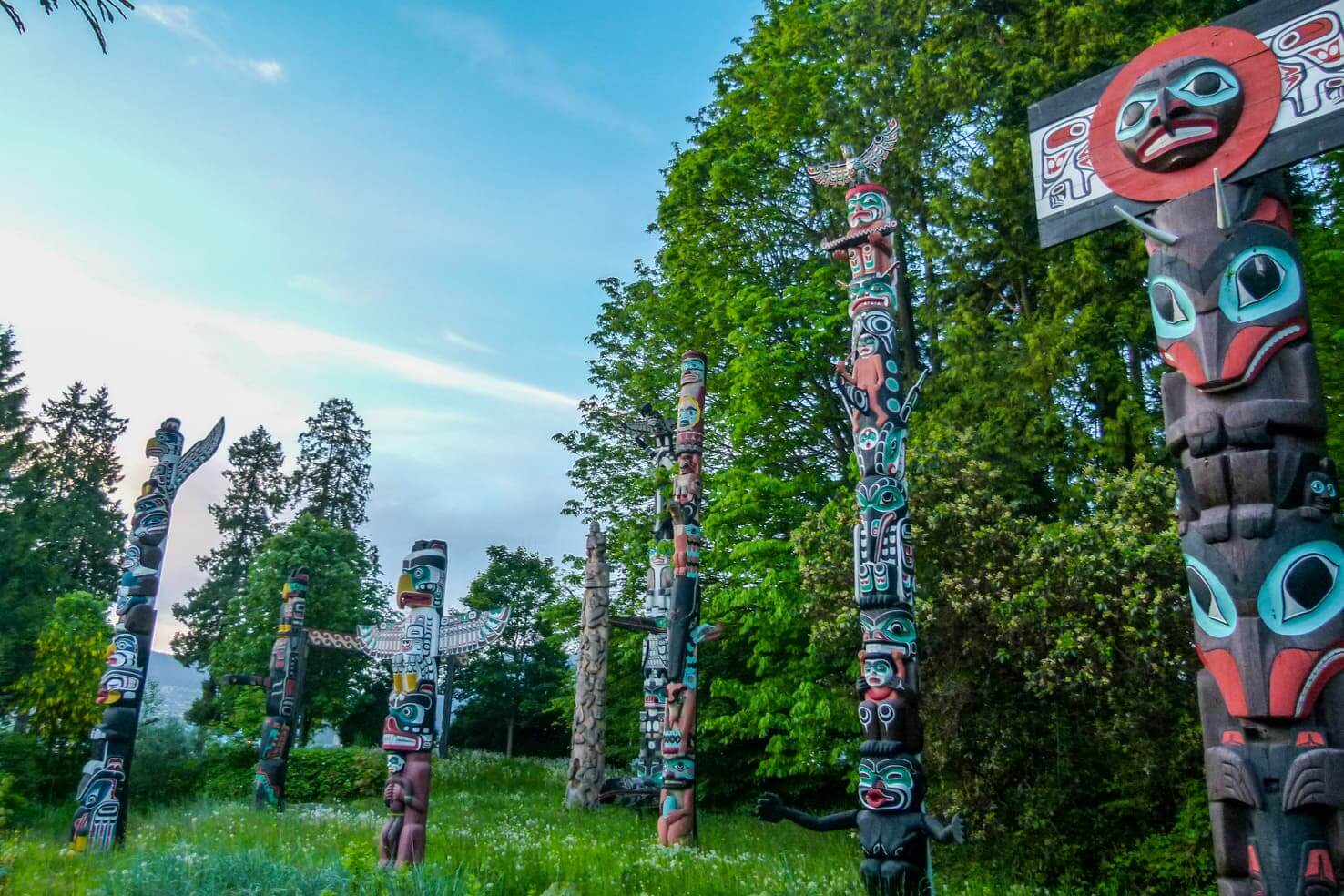
Totems in Stanley Park
Once you arrive, you will see why Vancouver is one of the top 5 places in the world to live in. Nice scenery, mountains, parks right at the city limits, ocean, and beaches.
Things to do in Vancouver
Vancouver has a mixture of city and outdoor life; well balanced for travelers and citizens. North and West Vancouver is the best place to stay if you want to visit Vancouver’s nature reserves. For inspiration what to do, read our post on how to spend 4 days in Vancouver outdoors.
The biggest highlights of Vancouver:
- Visit one of 20 beaches
- Walk around Stanley Park
- Visit Lynn and Capilano Valley
- Bike in historic downtown
- Climb the hills in North Vancouver for panoramic views of the city
Where to stay in Vancouver
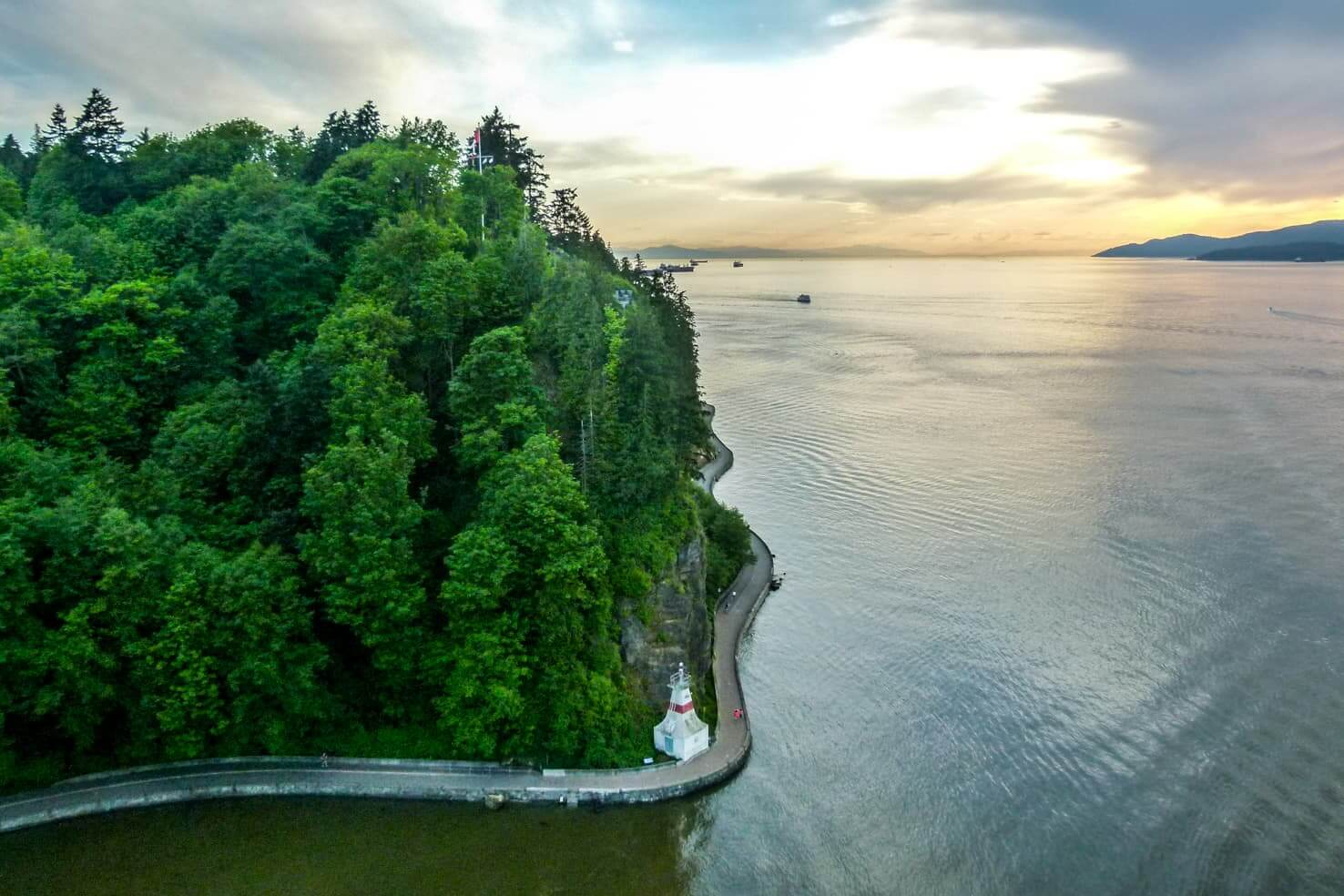
Biking and running around Stanley Park is very popular
Good locations to stay in Vancouver are downtown or North and West Vancouver. North Vancouver Hotel with swimming pool just outside Capilano Valley and close to Lions Gate Bridge can be your budget option. Campgrounds are mostly located on the outskirts of the city but Capilano RV Park is almost in the city center.
Bonus: Road trip on Vancouver Island
If you have more time and want to continue on Vancouver Island, we have a great article for you: 32 outdoor things you can do on Vancouver Island.

Lush rainforest on Vancouver Island
Best travel tips for your Western Canada road trip
National park fees
When you enter Banff National Park (or any national park in Canada), you are required to pay an entrance fee. You have a choice of either a daily pass or a yearly pass.
As of 2020, the fees are:
- 10 CAD per person for a daily pass, 20 CAD for a group/family
- 69.19 CAD per person for a yearly pass, 139.40 CAD for a group/family
The yearly Discovery Pass is valid for all National Parks in Canada. You can purchase it at the gate when you enter the national park, in the Visitor’s Centre or online here.
Road closures
Current road conditions for Alberta province can be checked here.
Icefields Parkway going from Lake Louise to Jasper is closed a few times each year, usually due to an avalanche. Sometimes it can take days before the road opens, make sure you check the conditions before the drive.
Current road conditions for British Columbia can be seen here.
Moraine Lake Road – Moraine Lake in Banff National Park, one of the prettiest lakes in the Canadian Rockies is only accessible through Moraine Lake Road which is open mid-May to mid-October every year. Outside of this time, the road passes an avalanche zone and can’t be accessed. You can only cross country ski until the viewpoint of Ten Peaks in winter. Visit this page for detailed info about the closure.
Yoho Valley Road leading to Takakkaw Falls is passing through avalanche area and it’s open mid-June to mid-October.
Trail reports
Always check a trail report from Parks Canada before going on a hike. There are occasional closures due to wildlife presence or hazardous conditions. Links for trail reports in each national park:
- Trail report for Banff National Park
- Trail report for Yoho National Park
- Trail report for Jasper National Park

early season conditions on a Bald Hills Hike
Bear country
If you’re hiking in the mountains of Alberta and British Columbia, you’re hiking in a bear country. You should always carry a bear spray (can be purchased at Visitor’s Centre or outdoor stores), know when and how to use it and make noise while hiking (to let bears and other wildlife know that you’re there as to not scare them)! Carefully read these instructions on how to behave around bears.
Wildlife
There is a big chance that you will encounter wildlife on your trip. Give them space and learn how to react when you encounter a bear or elk while hiking.
Read our post wildlife in Canada to see what kind of animals you can see here, you will be surprised.
Be respectful of all animals. Pick up brochures in the Visitor Centre or visit Parks Canada website to learn how to behave around them. You should never approach wildlife (and of course not take selfies!). If the animal feels threatened it might charge you. In these cases, Parks Canada has to put the animal down and it’s the person’s fault. In the better case, Parks Canada can give you a huge fine, they are regularly on patrol.
Common rules are:
- Never feed any wildlife
- Never get out of the car to get closer to a bear, elk, etc.
- Give them space and don’t surround them (we’ve seen this too often and you can see how stressed the animal gets)
- Pull over when taking pictures of wildlife and let faster cars safely pass you
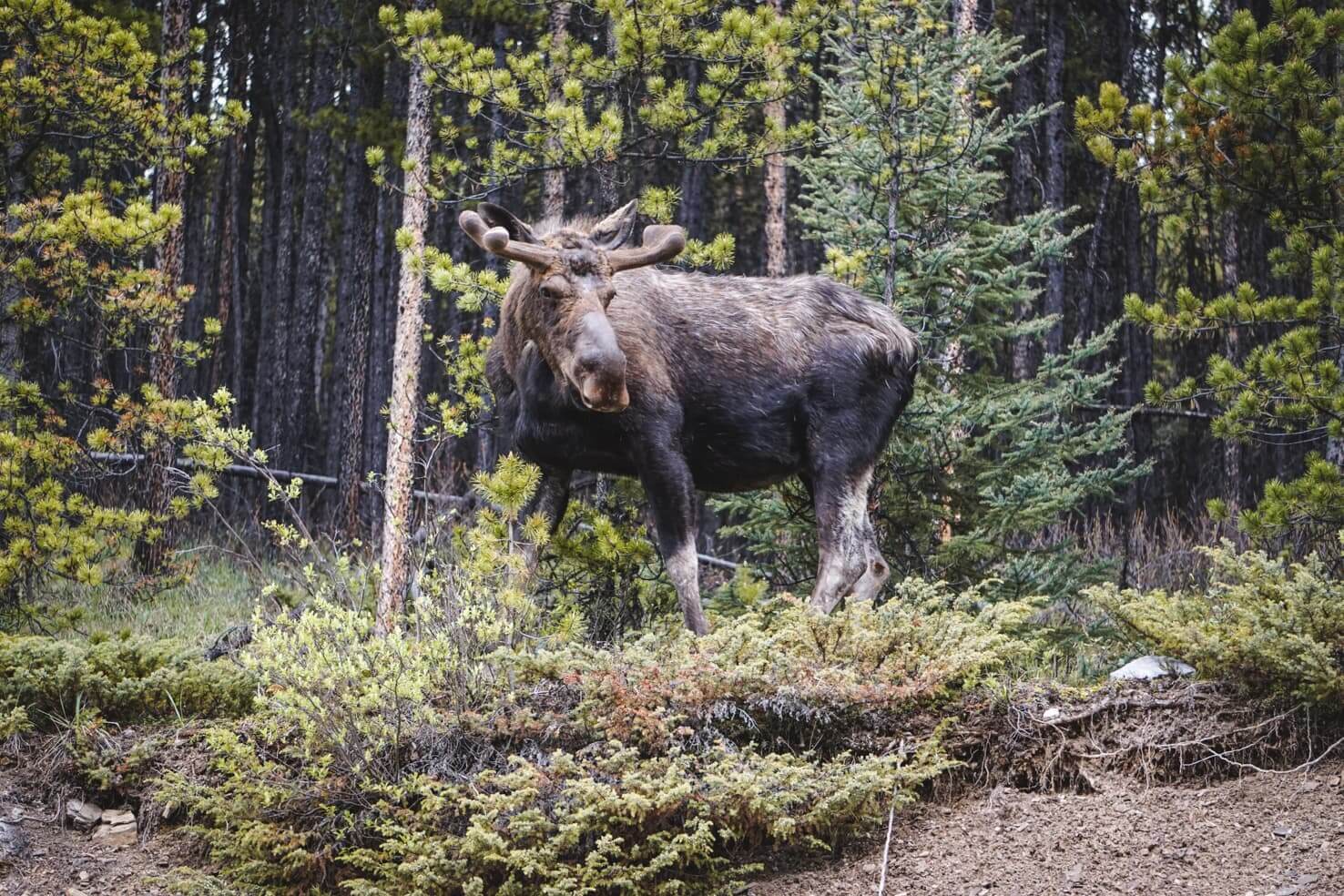
Moose in Jasper – only take pictures from your car and from a safe distance
GST
Alberta province, where Banff and Jasper National Parks are located, have 5% GST. The reason I’m telling you is that it is not automatically added to the price shown. For example, for ½ hour rental of the canoe in Lake Louise, the price is shown 105 CAD + GST, which means you will pay 110,25 CAD. The same goes for all the tours, souvenirs or groceries.
The difference might seem minor but it goes up when you travel from Yoho to Vancouver in British Columbia, their GST is 12%.
Visitor Centre
Visitor Centres are spread along the road in Canmore, Banff, Lake Louise, Field in Yoho, Jasper, Kamloops, Whistler, Squamish, and Vancouver.
They sell hiking maps, backcountry permits, souvenirs, bear sprays and provide invaluable information about national and provincial parks. You can ask the rangers about trail reports before hiking for possible closures or to help you book a campground.
Most of them are open year round, usually in national parks, it’s 8 am to 8 pm from May 18 to October 8, and 9 am to 5 pm outside those dates.
Public restrooms
There is always a public restroom in the Visitor Centre or close by, and also along the highway on pull over parking lots. I’m always amazed at how clean they are and supplied with toilet paper and hand sanitizer.
Free Wi-Fi
You can access Wi-Fi in public libraries, most Visitor Centres, Tim Hortons (the most popular Canadian coffee place) & McDonald’s.
Travel planning resources for Canadian Rockies
Travel tips
Whatever destination you choose to visit, there are certain steps you should never forget. After plenty of mishaps on the road, we compiled a list of 19 smart travel tips so you don’t have to make the same mistakes as we did.
Packing list
When you visit Canadian Rockies, you’ll see that hiking options are endless. Don’t forget to pack properly and check out our hiking packing list for summer in the mountains.
Flights
As one of the biggest expense of your trip, you want to be smart and book your flights in advance. Read our post about how to find cheap flights for more tips. Search engines we use:
Rent a car or campervan
Distances in Canada are huge and public transport very rare. To enjoy your trip to the fullest, you need to book a car or campervan. Options we recommend:
- Smile Campervans – our budget-friendly minivans with a small kitchen and a bed that folds into a couch!
- Rentalcars – a huge search engine that compares prices of different car rental companies
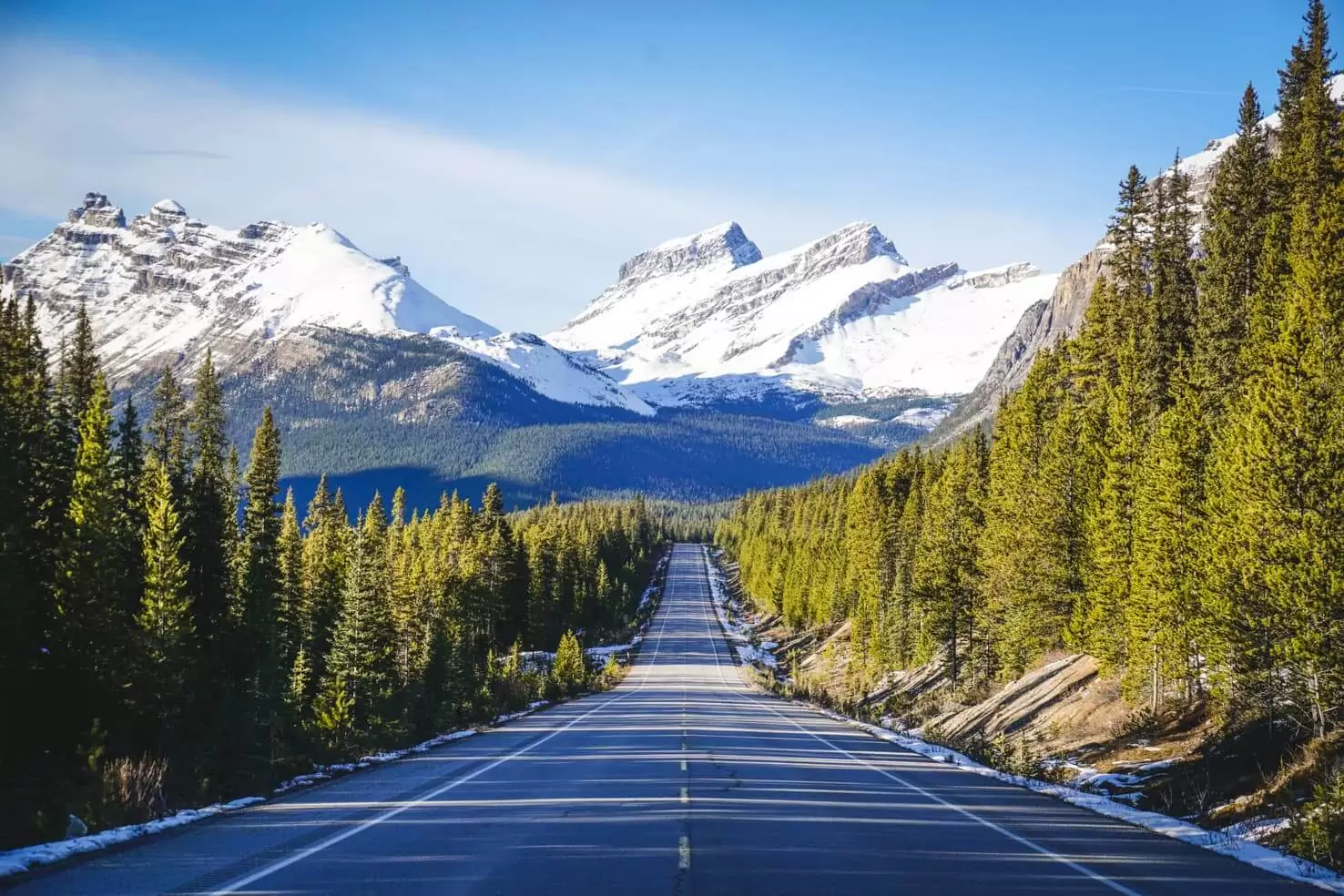
Road trip on Icefields Parkway
Accommodation
- Parks Canada – for campgrounds (the most budget-friendly option in the Rockies)
- Booking.com – search engine we use the most for all accommodation
- Airbnb – for booking accommodation through locals. If you’re not registered yet, sign up and get 40$ credit for your next stay.
- Couchsurfing – to stay with locals. It’s based on cultural exchange principle where you get a free bed in exchange for providing something of value to your host.
- Hostelworld – for booking hostels
Read our tips about how to find good & cheap accommodation.
Travel insurance
We never ever travel without insurance. It’s better to be safe than sorry, basically our safety policy. For short or long term travel, we both use and recommend World Nomads, get your quote here.
We sincerely hope that our Western Canada road trip itinerary from Calgary to Vancouver will help you plan your great road trip.
Read more:
Chrysler Grand Voyager/Dodge Grand Caravan minivan camper conversion
Cheapest way to travel across Canada
How to get from Calgary to Banff: complete breakdown of all options
What stop on your road trip from Calgary to Vancouver would you like to visit the most? Share with us in the comments and let us know if you have any questions.
Spread the word! PIN this to your Pinterest board.
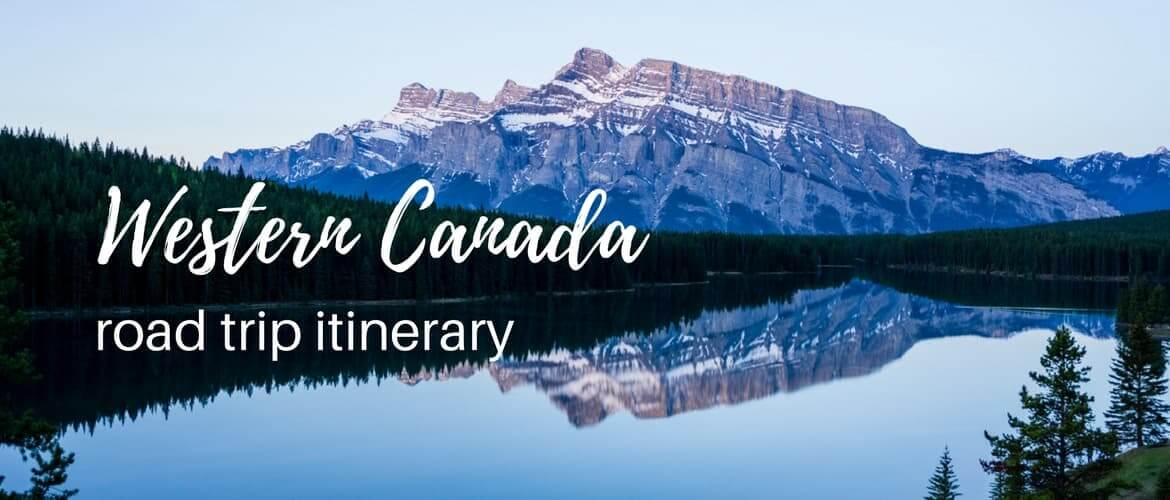


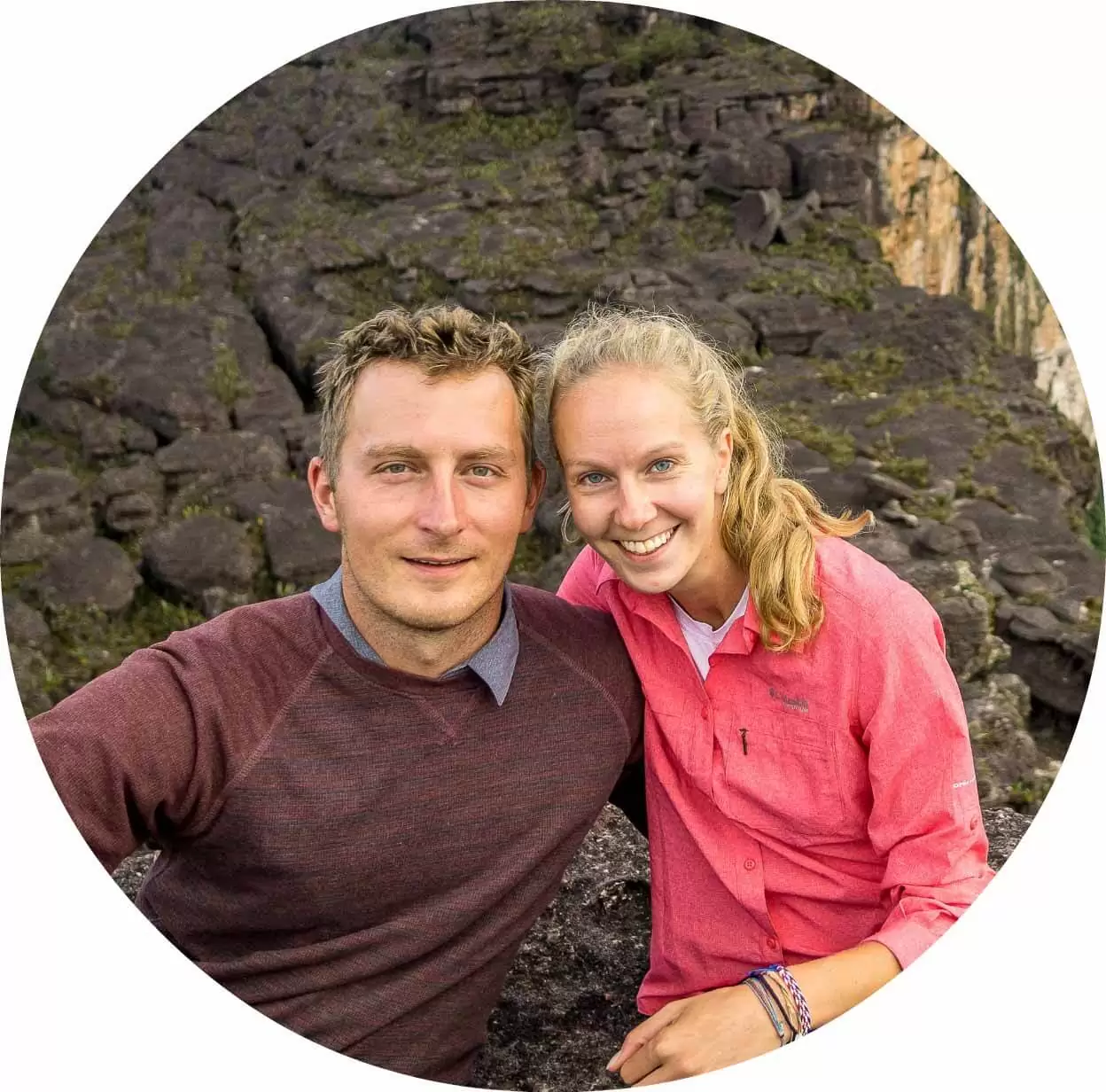
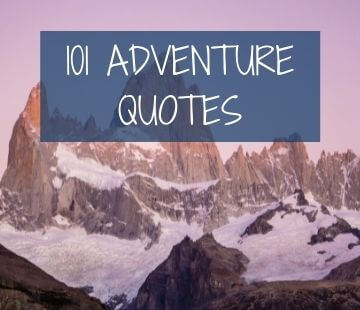
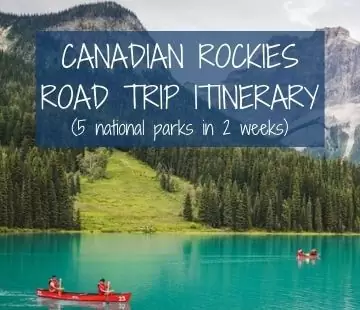
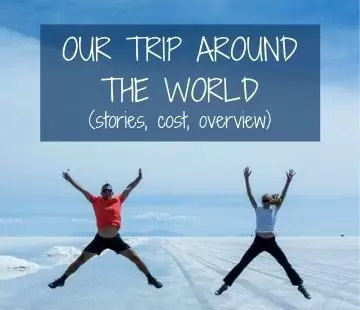
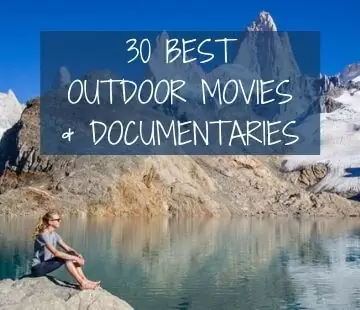
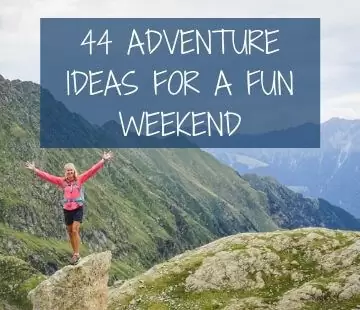
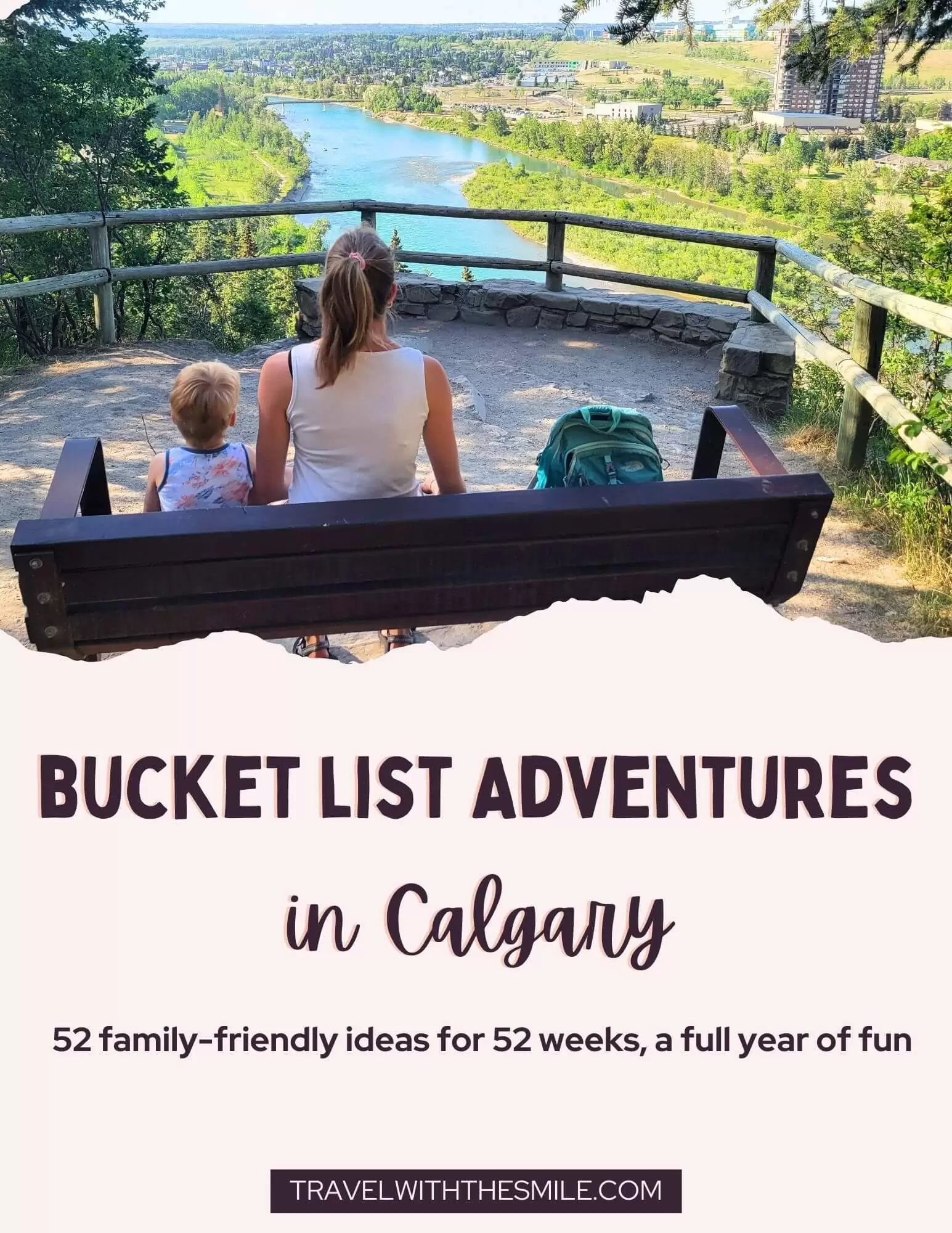
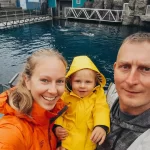


Hi Maya!! Thank you so much for your posts. They’re very useful and inspiring!! I just got my Working Holiday Visa and as you can imagine I am full of questions.I lived for over a year in Lake Tahoe California, so I thought it would be easier to get ready and move back to the mountains. But it still seems to be pretty different in Canada, I am confused about where to go, where to live and what to expect. (Whistler/banff/calgary/vancouver island – Working situation – living costs)
Would you give me advise on this move?? I would really appreciate if I can chat with you and ask you a few questions.
Take care and regards from the city of Madrid!
Laura
Hi Laura, how exciting! I’m happy for you. Shoot me an email and I’ll help where I can.
Hello Maya
I can’t express how much l enjoyed reading your post, as I will be on a one month road trip to western Canada starting in Calgary.
I will be doing your 2 weeks as per your post and I am wondering I still have another Two weeks to discover some where and was thinking traveling to the Alaska to see this part of the world.
Would you have any idea where to go or a plan for this kind of trip from Vancouver.
Please let me know your thoughts.
I will be starting my trip to Calgary on May 11,2019
Thank you kindly
Alex
Hi Alex, nice to hear you enjoyed the post.
I would recommend visiting Vancouver Island and Sunshine Coast instead of driving to Alaska, it’s a very long drive and you will be driving a lot anyway. But we haven’t done it so I really can’t say much about it.
Just so you’re aware – the road to Moraine Lake will most likely be still closed when you visit so you won’t be able to visit the lake. And Lake Louise will be partially covered with ice. But there is so much to see and do in Canmore, Banff and Jasper that you can spend more time in these places. Including all of this, one month is an ideal length in my opinion.
Hi Maya,
I am so excited to find your post. My husband and I are thinking of doing this exact trip this summer!
Thanks,
Heather
Hi Heather, that is fantastic! You will have a great time. Let us know if you have any questions.
Hi Maya,
I’ll be doing a similar trip in July this year and have got some great tips from your blog. My partner hates being tied down to a destination at the end of a day is it so busy we would struggle finding accommodation as we go or booking a day in advance?
have enjoyed reading all your ideas.
Thanks,
Fran
Hi Fran, I completely understand, we also like to book as we go. Since July and August is the peak season, locations such as Banff, Lake Louise, Jasper and Whistler might be fully booked (even campgrounds). So if you’re planning to stay in these towns, I would suggest booking as soon as possible. Or alternatively, you can stay in Canmore instead of Banff and in Hinton instead of Jasper, depends on your preference and your budget. We usually stay in budget friendly accommodations so Canmore and Hinton are great, we didn’t have troubles to book a day in advance during summer.
Hello Maya,
A few sisters and myself are thinking about flying from Ontario to Vancouver the summer of 2019 for a family event near Williams Lake BC. After reading your suggestions, I’m thinking of making this into a road trip and flying back from Calgary.
Thanks so much
I’m glad to hear that Lori. Sisters road trip sounds amazing.
Hello
Thank you for your advice to travel on a budget, I enjoyed your tips on what to visit
I have been thinking for few years to do this road trip and Now I will plan to go for it this fall of 2018.
If can send any extra hints you have would greatly appreciate.
In January I did a Hawaiian road trip for 5 weeks to explore The 2 main islands, the cost was Round 7500 in total.
Thanks again for your post
Fall is a great time for a visit. I believe we put all the great tips in the post but if you have a specific question, please ask. Enjoy your trip!
Fantastic article, we are doing this trip after 8 nights in Toronto arriving Calgary 27th July arriving vancouver 6th August for 3 nights then fly home to Ireland. Very helpful, article, we’ve booked a night in Cochrane after leaving Calgary then a night booked in Golden but I’m wondering now if the 2nd stop is a wrong decision as we’d like to go to Jasper. Any thoughts would be welcome.
Glad to hear that Karen! If you’re driving from Calgary to Vancouver and you have July 27th – Aug 6th, I would suggest going Canmore, Banff, Jasper etc. But if you’re flying to Vancouver from Calgary and you have more time in one area, you can go to Golden and spend there a few days. Otherwise I think that would add many km to your already long trip. Better spend more time enjoying outdoors in Jasper than driving to Golden. Hope this helps!
your itinerary looks amazing and has every thing we thought of doing & seeing . but I am now concerned about our timing ,we are 2 couples and were planning on flying into Calgary the week of October 13 for a two week driving trip ( not camping ) . Will things be closed ? will it be too cold. my husband & I are from Montreal & our cousins are from Atlanta
thanks
Hi Cheryl, if you’re not camping, October is fine. It’s a little chilly and might snow but October is different every year. I think Canadian Rockies are great to visit in the fall. There are less people everywhere and mountains usually have a little dust of snow on top which looks beautiful on photos. For example – the photo of Peyto Lake (day 8) was taken in October few years ago. When we went to the lookout in October last year, the trail was covered in snow and also the top of the mountains but it was still quite warm outside. The only thing that might be closed is the Moraine Lake Road, the only road leading to the Moraine Lake. They closed it in October 22 last year.
Hello there!
I just loved the post and saved all your tips for my trip next year. I was wondering if you would have any tips for people who were thinking to do this route with a motorhome. Is it cheaper than staying in hotels? Are there camping options along this route?
Thank you and looking forward to hear from you.
That’s great, Camila!
Motorhomes can be sometimes as expensive as hotels, it depends on the size. For example our campervans (which you can find here: http://www.smilecampervans.com) are a budget friendly option and some motorhomes can be twice as expensive or more, and you need to include camping fees as well (bigger sites with hookups are more expensive than regular sites).
My suggestion would be to go as small as possible, several parking lots at popular attractions have limited parking for big motorhomes.
There are a lot of campgrounds along the route – we’ve listed some of them in the itinerary above. For Jasper National Park, you can find all campgrounds with our tips here: https://travelwiththesmile.com/blog/camping-in-jasper-national-park/
If you end up renting a motorhome, make sure you book campgrounds (especially in Banff and Jasper) well in advance. Bookings open in January and sites for motorhomes are usually fully booked months before the summer.
That’s awesome! Thanks for sharing this
Thank you for this amazing detailed blog! myself and my husband are planning this trip at the moment, although we may do Calgary to Vancouver in 10 days as opposed to 2 weeks and are also thinking of finishing with an alaskan cruise. Have you ever done the cruise, or is it something you would recommend?
In all honesty Maria, cruise ships is not something we recommend at all as they are one of the biggest environment polluters. So far there’s no evidence that cruise companies are trying to minimize their waste or doing anything else in eco-friendly way.
What I would suggest is to drive from Vancouver to Alaska. The whole British Columbia is wild and gorgeous and you’d be missing a lot of natural beauty.
Thanks for this great travel article. We will travel in summer of 2022 for 3-4 weeks from Calgary to Vancouver (incl. Vancouver Island) by motorhome.
Your tips and suggestions (hiking, routes) We will consider your tips and suggestions (hiking, routes) in our route planning. Many greetings from Germany
Planning a road trip is so exciting. Wishing you the best time, Mike!
Hi,, I am Deshapriya Vipulatheja (SriLanken).I have planed to visit Calgary to Vancouver on 23rd to 28th August 2022.The above information’s are valuable to me and my family for arranging our trip .Thank you very much for all information.
God bless you
You’re very welcome. Wishing you a beautiful trip with your family!
Hi, your article has been a great help. I am in the middle of planning an RV trip for all the family. We fly to Calgary and pick up our RV 24/9/2023, stopping at Banff, Lake Louise, Jasper, Clearwater, Whistler and then Vancouver drop off on the 5Th October. Im trying to work out how long to book for the RV in each area. I’m thinking 3 nights Banff, 1 night Lake Louise, 3 nights Jasper, 2 nights Clearwater, 2 nights in Whistler. Im trying to fit in Banff – Gondola, Evening Wildlife tour. Then from Lake louise -Colombia Icefield trip and Skywalk. Jasper – Float Athabasca, Spirit Island Tour. Whistler – ATV safari. In your opinion do I need to book and extra day in Lake Louise and one less at Clearwater or do you think you need two days at Clearwater after the journey from Jasper?